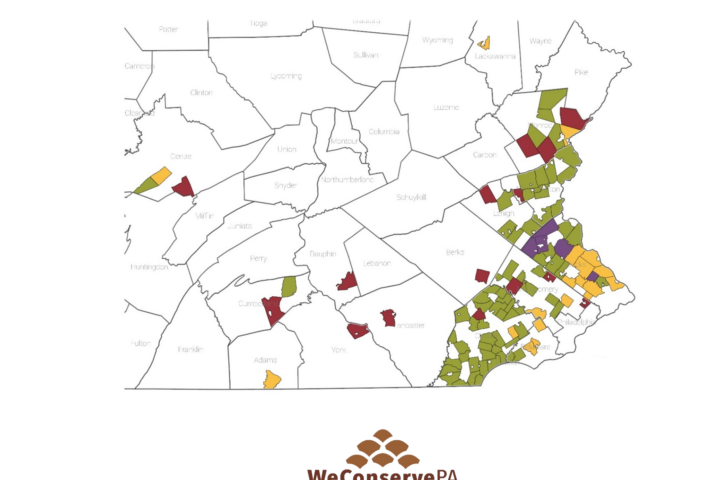The Pennsylvania Land Trust Association has finalized the change to section 6.04 of the Model Grant of Conservation Easement and Declaration of Covenants and posted the updated model at ConservationTools.org. The change is identical to the proposal posted in January. All users are strongly encouraged to adopt this change immediately. Thanks to everyone who offered comments on the drafts.
Although only subsections (a), (b), and (c) were modified, the entirety of section 6.04, as modified, is presented below:
6.04 Review
The following provisions are incorporated into any provision of this Grant that is subject to Review:
(a) Notice to Holder. Before Owners begin or allow a Subdivision, Improvement, activity, or use that is subject to Review, Owners must notify Holder of the proposed change including with the notice such information as is reasonably sufficient to comply with Review Requirements and otherwise describe the proposal and its potential impact on the Conservation Objectives.
(b) Notice to Owners. Upon receipt of Owners’ notice, Holder must review the proposed change and notify Owners of Holder’s determination to (1) accept Owners’ proposal in whole or in part; (2) reject Owners’ proposal in whole or in part; (3) accept Owners’ proposal conditioned upon compliance with conditions imposed by Holder; or (4) reject Owners’ proposal for insufficiency of information on which to base a determination. If Holder gives conditional acceptance under clause (3), commencement of the proposed Subdivision, Improvement, activity, or use constitutes acceptance by Owners of all conditions set forth in Holder’s notice.
(c) Time for Review. If requested by Owners, Holder must furnish its estimate of the time required to review the proposed change and use its best efforts and due diligence to notify Owners of its determination within this time period. Otherwise, Holder must make its determination within a reasonable period of time following receipt of Owners’ notice to Holder.
(d) Standard of Review
(1) The phrase “without any obligation to do so,” in relation to an approval or determination by Holder, means that, in that particular case, Holder’s approval is wholly discretionary and may be given or withheld for any reason or no reason.
(2) In all other cases, Holder’s approval is not to be unreasonably withheld. It is not unreasonable for Holder to disapprove a proposal that may adversely affect resources described in the Conservation Objectives or that is otherwise inconsistent with maintenance or attainment of Conservation Objectives.
PALTA has also updated the commentary to subsections (a), (b), and (c), which is presented as follows:
Purpose. This section provides the procedure and standards for Review as and when Review is required under articles 2, 3, 4, and 5.
Use of Review. In planning and preparing a Grant, you should take care to allow, without Review, only those items that do not have a foreseeable adverse effect on Conservation Objectives.
S&P. Practice 9.E.1 calls on land trusts to:
Allow only uses and permitted rights that are not inconsistent with the conservation purposes and that will not significantly impair the protected conservation values.
(a) Notice to Holder
Purpose. This provision contains the procedural requirements to initiate the Review process.
The definition of Review Requirements in article 9 accommodates multiple approaches to establish the Review Requirements.
(b) Notice to Owners
Among the four possible responses to Owners’ request for Review is rejection of Owners’ proposal for insufficiency of information on which to base Holder’s decision. This alternative is included so as to avoid the need to incorporate detailed Review Requirements into the Grant and to give Holder a reasonable opportunity to determine whether or not additional information is needed to give a definitive response to Owners’ proposal.
(c) Time for Review
Purpose. This subsection addresses the time required by Holder to review a proposed change and provides for Owners receiving a response in a reasonable period of time.
Flexibility Is Necessary. Some reviews require only a very short time for completion while other more complex ones can take considerable time and effort. This provision provides Holder flexibility to deal with this variability while providing Owners assurance that they can receive a response in a reasonable period of time. A document drafted with a fixed period of time for review doesn’t realistically address the wide variability in the complexity of proposals; conversely, a document that fails to address the issue of time opens the door for differing expectations and potential disputes. The model’s provision seeks a balance affording benefits to both Owners and Holder: Owners benefit because it may be less likely that Holder will reject their proposal outright to comply with a fixed time for review and more likely that Holder will take the time to consider alternatives to meet its standards for approval. Holder benefits because its time estimate can take into consideration the availability of its own staff and, in some cases, expertise of others, to furnish a thorough review.
Prior Approaches. Previous editions set rigid time requirements for Holder to make a time determination: If Holder failed to act within the time limit, the request was deemed approved. Stimulated by a tax court ruling in 2018, this approach was revisited and scrutinized by land trust practitioners who firmly rejected it on multiple counts, among them:
- Automatic approval of an action that runs contrary to the Conservation Objectives is inconsistent with the reason for the easement’s existence.
- Automatic approval conflicts with Holder’s obligation to block actions inconsistent with the Conservation Objectives, unnecessarily escalating the potential for conflict and litigation.
- An easement donated in whole or part that includes a deemed approval provision may be disallowed as a qualified conservation contribution.
Previous editions also contained a commentary option to have Owners’ requests instead be deemed disapproved if not acted on by Holder within the specified time period. This alternative likewise has been rejected in favor of the fair and balanced approach now presented in the model.


